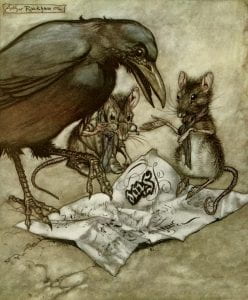Two men, two journals. Or, rather, fifteen men between 1821 and 1861 in Amherst College with an odd assortment of journals, diaries and autobiographies. Or, actually, forty years of Amherst College students living and recording their lives only to have a fraction end up in the archives, tucked away in neat little folders in dark boxes on metal shelves.
 But for me, today, there is only Alfred and Augustus, class of ’58 and ’39, with their patterned leather-bound books enclosing nineteenth century scrawl. And even that is too broad a scope.
But for me, today, there is only Alfred and Augustus, class of ’58 and ’39, with their patterned leather-bound books enclosing nineteenth century scrawl. And even that is too broad a scope.
Augustus Wing was a philosophical mind, particularly fond of poetry and linguistics, with a keen appreciation of geography and theology and a tendency to jot down bits of history.
Alfred Ellsworth, on the other hand, is a more opaque figure. Not because his journal lacks substance– it was auctioned off with a letter noting its rich Amherst-related contents — but because, quite frankly, I can stare and stare and stare and make little sense of his slender slanting scrawl.
So I spend my time with Augustus.
***
The data is marshaled into precise little rows, the columns standing side by side. Each student from the class of 1825 with their hometown right up against their place and date of death. As if that weren’t already cold and impersonal enough, another sheet strips away the human touch of “Colerain” and “Woodbridge” and replaces them with lengthy strings of latitude and longitude.
But, strangely, it’s not as austere as it seems. As the numbers shift from from 42 to 33, or 77 to 89, you see a life far flung from the familiarity of home. Lincoln Clark and Robert Coffin, next to each in the class list might now be lying next to each other in their graves– both died in the Massachusetts town of Conway. And of the 31 classmates, seven of them– seven!– died in the decade after their freshman year.
The data waits, geographical coordinates ready to map across the United States patterns of concentricity and change. TimeMapper and MapStory lurk between tutorial and troubleshooting tabs, their infrastructure perfect for the task at hand. And yet…
I am thwarted. I add a layer of my data, but nothing appears on screen. Following the diagram in the FAQs, I publish my Google spreadsheet, only to have the website insistently inform me that I should try publishing my sheet. I stare at the other projects and their pristine visualizations and wonder in despair if the rest of the world will ever see the beauty in my data.
***
I am used to living, research-wise, in the best of all possible worlds. With all my texts in neat type, with the library making available any article I require, with Word and Scrivener and Powerpoint all mastered — with all this, I am used to threading together themes with data and established theory with original commentary, everything dressed up and bolstered by with alliteration, chiasmus, and tricolons crescens.
Now I encounter resistance in both the material and the medium, especially at the point of welding them together. For how can I honestly present a picture of student life at Amherst if there’s a rich source I neglected? How much worse will that lacuna be when magnified by the data’s presentation? Is it dishonest, as well, to use anything less than the optimal software to display the data if by doing so its representation loses clarity and possibly significance as well?
This battleground between data and its display is a new one for me, and at times I feel unequipped. Which should dictate which? Whose side am I fighting on? Am I paramedic trying to keep both armies alive, or a Valkyrie ready to whisk away the weaker to a different sort of glory?
I think, perhaps, that as I learn to negotiate that space between it will become less of a brawl and more of a ballet, methodology, data, and research questions each a moving piece but ultimately moving in harmony. That is the ideal, at least.
And as I work towards such a state, I’ll keep dreaming up research questions and digging through the archives. My naive hope at the beginning was to meld medium and material, to have one reflect and amplify the other. I realize now that the task will be more difficult than I imagined– by that only makes me all the more determined to achieve such an arduous but ultimately invaluable union. And to do so I will need an intimate understanding of early Amherst. The hard (yet easy data) of birth and death sites alongside trickier anecdotes and opinions gleaned from diaries, journals, publications, lecture notes and letters. I must be even-handed in my research, push back at the resistance, and aim to achieve a balance.
It is only fair, I think, to have one Alfred for each Augustus.
Reading your post (and having spoken with you on the topic for a day or two), I, too, am perturbed by the ways that technology can be limiting–or at least by the ways that it can throw temper tantrums. But I think that you’re coming at the struggle with a determined and passionate head on your shoulders, and what more can one ask for? I am confident that you’ll succeed in the end, learn in the process, and even make Augustus proud in the long-run!
I love your “brawl to ballet” metaphor for the interplay between material and medium in DH! It gets at exactly what I was trying to articulate in my blog post as well. Though our first few attempts at DH projects thus far may have been decidedly more brawl than ballet, I’m looking forward to watching that shift as we gain more facility in the world of DH…